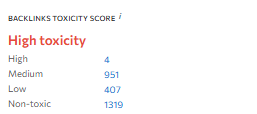Backlinks have been a core part of SEO since the early days of Google. They are often called “votes of confidence” from one website to another and yes, they still play a major role in determining your rankings.
But the truth about backlinks today is more nuanced than ever. Gone are the days when quantity beat quality. In 2025, it’s not just about getting backlinks, but getting the right kind that align with what Google actually values.
In this article, we will break down what backlinks are, how they affect SEO, the most common myths, and what Google really looks for in your backlink profile.
What Are Backlinks? A Quick Refresher

A backlink is simply a link from one website to another. If another website links to your content, that’s a backlink to your site.
For example: If a tech blog links to your guide on “best budget laptops,” that’s a relevant backlink pointing to your page.
These links are important because they signal to Google that others trust your content. And trust plays a major role in Google’s ranking factors.
Backlink Myths That Refuse to Die
Before we dive into what Google looks for, let’s clear up a few common backlink misconceptions:
✅ Myth: More backlinks = better rankings
→ Truth: Google prefers a few high-quality backlinks over hundreds of low-value ones.
✅ Myth: All backlinks are equal
→ Truth: Context, authority, and relevance matter more than raw numbers.
✅ Myth: Buying backlinks is a fast track to success
→ Truth: Google’s spam algorithms are smarter than ever. Paid or manipulative links often lead to penalties.
What Google Actually Looks For in Backlinks
Google evaluates backlinks based on multiple signals. Here’s a quick comparison of good vs bad backlinks to help you build a profile that strengthens, not sabotages of your rankings:
| Backlink Factor | ✅ What Google Likes | ❌ What Google Penalizes or Ignores |
|---|---|---|
| Relevance | Links from related websites or content in your niche | Links from unrelated or off-topic sites |
| Authority | Backlinks from high-DR domains like news sites, .edu, etc. | Links from spammy or low-authority domains |
| Placement | Contextual, in-body links naturally placed in content | Links in sidebars, footers, or hidden sections |
| Anchor Text | Descriptive, branded, or partial-match anchor text | Over-optimized or keyword-stuffed anchor text |
| Dofollow/Nofollow | Natural mix, with emphasis on quality dofollow links | Artificial nofollow/dofollow imbalance or excessive nofollow |
| Traffic & Engagement | Links that bring real visitors and have user interaction | Links that exist only for SEO and bring zero engagement |
| Acquisition Method | Earned links through content, outreach, or PR | Paid links, PBNs, link farms, or reciprocal link exchanges |
This table simplifies what matters most to Google when evaluating your backlink profile. Aim to earn links that tick the boxes on the left, and avoid practices that fall into the right column.
How Google Detects Unnatural Backlinks

Google uses a mix of manual reviews and algorithmic checks to detect manipulative link-building practices. These include:
- Link farms and private blog networks (PBNs)
- Mass comment spamming
- Paid or reciprocal link schemes
- Irrelevant or sitewide footer links
If caught, your site may face a manual action or algorithmic ranking drop — especially if your backlink profile looks unnatural.
You can audit and clean up harmful links using Google Search Console or a disavow file, but prevention is always better than cure.
How to Get High-Quality Backlinks in 2025
You don’t need shady tactics. Here are ethical link-building strategies that Google actually rewards:
1. Create Linkable Assets
If your content isn’t worth linking to, no one will link to it. Focus on publishing valuable, original content that solves problems, teaches something new, or offers data others will want to reference.
Types of linkable assets:
- Original research & surveys (e.g., “Digital Marketing Trends in Malaysia 2025”)
- Comprehensive guides (e.g., “The Ultimate Guide to Local SEO”)
- Infographics and visuals
- Interactive tools or calculators
- Case studies with measurable results
Tip: Promote your content after publishing. Share it on LinkedIn, Reddit, niche forums, and directly with people who’ve linked to similar resources.
2. Guest Posting (Legitimately)
Guest blogging is still a great way to build backlinks, especially when done with care.
Best practices:
- Only write for relevant, high-quality websites in your industry
- Avoid generic sites that exist solely for guest posts
- Include contextual backlinks to relevant pages (not just your homepage)
- Use branded anchor text or natural phrases, not exact-match keywords
Example: If you run a SaaS tool, pitch a guest post to a digital marketing blog on “How SaaS Companies Can Build Authority with Content Marketing.”
3. HARO (Help a Reporter Out) and Journalist Platforms
Help a Reporter Out (HARO) and similar services like Terkel or Qwoted connect journalists with expert sources.
How it works:
- Sign up and receive daily emails with reporter queries
- Respond with clear, quotable insights
- If chosen, you get a backlink from an authority site (like Forbes, Business Insider, etc.)
This is one of the most efficient ways to earn media backlinks — especially for consultants, founders, and niche experts.
4. Broken Link Building
This classic white-hat technique still works beautifully in 2025.
Step-by-step:
- Find relevant articles in your niche with broken outbound links
- Create or match content that could replace the dead link
- Reach out to the site owner and offer your content as a replacement
Tools to use:
- Ahrefs (Site Explorer > Broken Links)
- Check My Links (Chrome Extension)
- Screaming Frog SEO Spider
This method helps others improve their site which makes outreach feel less “salesy.”
5. Build Relationships
Backlinks often come from real connections — not just cold outreach.
How to build genuine relationships:
- Engage with industry peers on Twitter/X, LinkedIn, or niche Slack groups
- Share and comment on others’ content before asking for anything
- Collaborate on webinars, expert roundups, or joint guides
- Offer helpful feedback or spot errors in their existing content
Think of link building as networking, your goal is to be seen as a valuable contributor in your niche.
Do You Even Need Backlinks in 2025?
Short answer: Yes but not at the cost of quality content.
Google now uses E-E-A-T (Experience, Expertise, Authoritativeness, Trustworthiness) as a core ranking concept. Backlinks can reinforce your authority, but they won’t save you if your content is thin or generic.
Also, don’t overlook internal linking, it strengthens your site structure and distributes SEO value across your content.
Backlinks Still Matter If You Earn Them the Right Way
Backlinks are still a top Google ranking factor, but in 2025, it’s all about quality, not quantity.
Focus on relevance, authority, and natural linking strategies. Forget the shortcuts, Google is too smart for them now. Instead, build a strong backlink profile that earns trust, sends real traffic, and supports your SEO for the long term.
Curious About SEO? Contact Us Now for a Free Website Audit!




